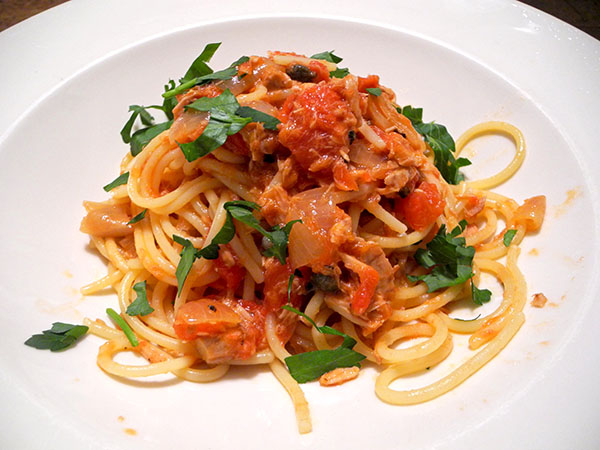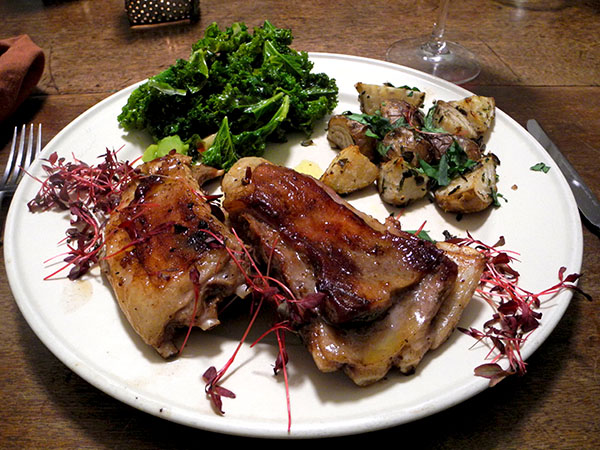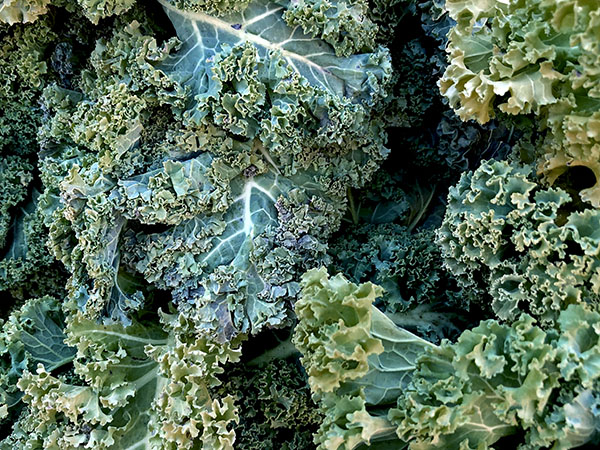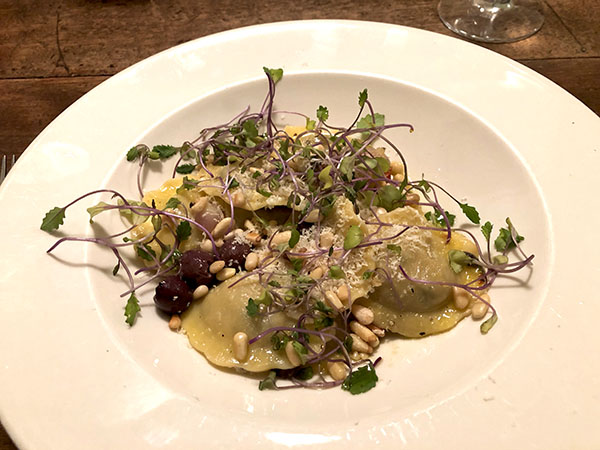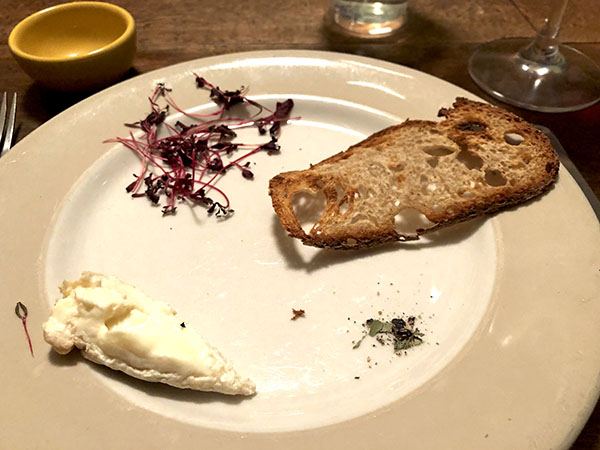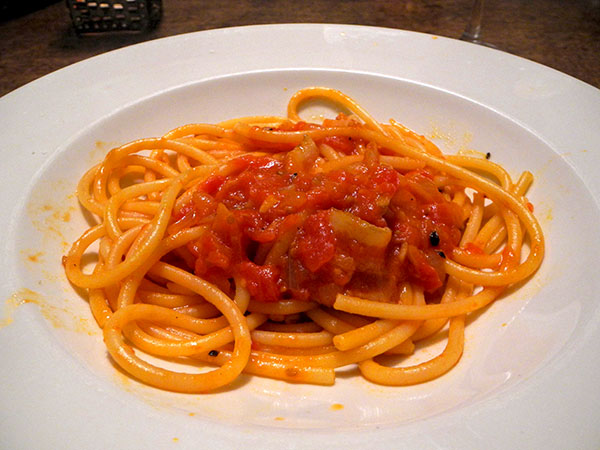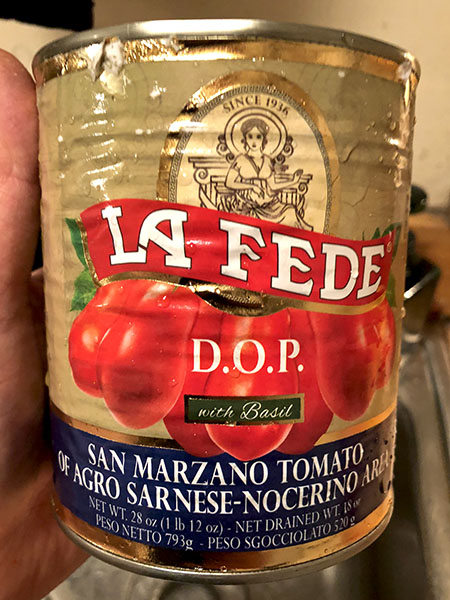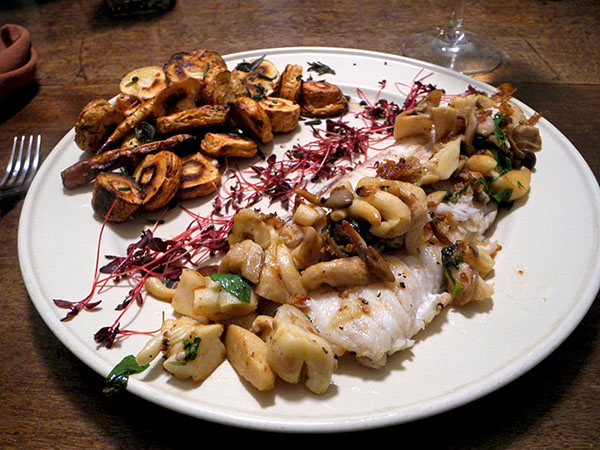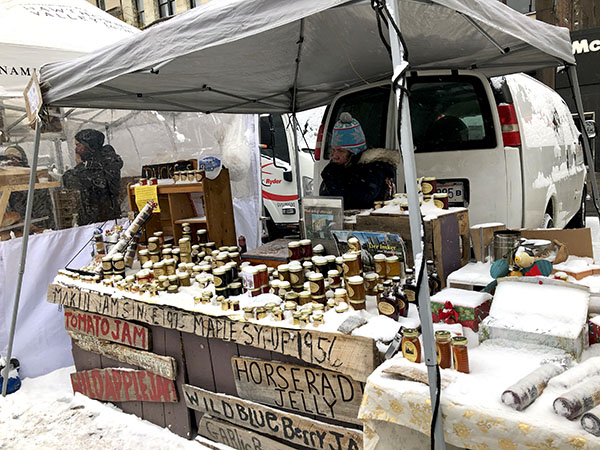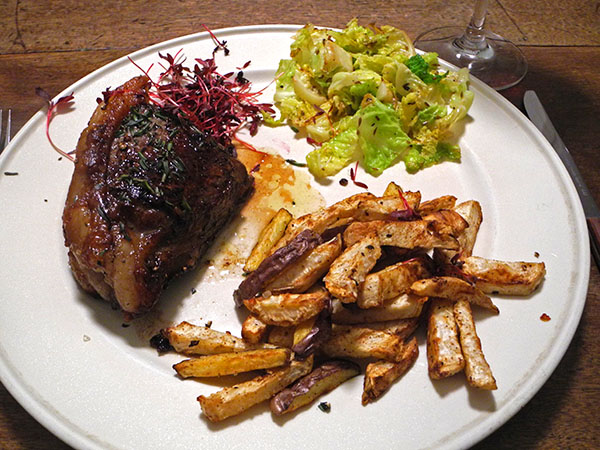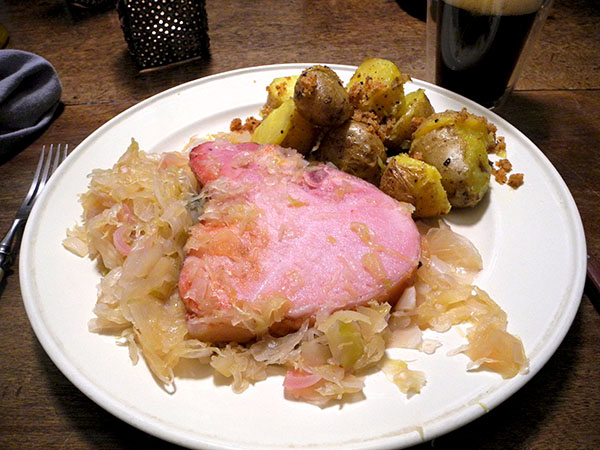
Last night, just after we had finished eating, and before writing this post, I followed up on a tweet and reply I had published earlier in the evening that had indicated, with no embellishments, what one of the major parts of this meal would be (I even included an image of the sauerkraut while it was cooking). That second tweet read,
not saying it just because there’s been a certain buildup to this meal, and some of us know not every meal coming out of this kitchen is even very good, but tonight’s (sauerkraut, smoked pork chops, Saltzkartoffeln with toasted rye bread crumbs, was sublime
The dinner really was very, very good, although I can’t explain why. In fact, just before I had begun to put it together I had thought about aborting it and coming back to it on another day: I had learned I didn’t have a couple of the ingredients for the particular sauerkraut I had hoped to serve with the Rauchbier I planned to serve with the meal. Instead I shifted gears and turned to another recipe, but keeping the Rauchbier.
I would say that nothing was really new in any of the 3 parts of the entrée, either the ingredients or the techniques used, except for caraway bread crumbs as the topping for the potatoes. I did accidentally reverse the order of the covered/uncovered sequence in the early cooking of the sauerkraut, but I had expected starting off uncovered would have had a negative effect on the texture, if not the flavor; it might actually have been a boon.
In any event, this meal made me very happy, also because I brought it in under our new mutually-agreed dinner deadline, making us both very happy.
- * one 16-ounce glass jar of sauerkraut (simply cabbage, water, sea salt) from Schaller & Weber [also here] drained and very well-rinsed in several changes of cold water, drained again and placed inside a large, heavy, high-sided tin-lined copper pot with 2 medium sweet yellow onions and one red onion (the red one to be a little perverse), both from Norwich Meadows Farm, one ‘Newtown Pippin’ apple from Samascott Orchards, 8 or 9 whole juniper berries and about the same number of Whole Foods Market proprietary brand peppercorns, a little sea salt, 1 large Sicilian bay leaf from Buon Italia, enough fresh water to almost cover the sauerkraut, with more added later on as needed, all brought to a boil then merely simmered (uncovered at first, this time) over a low flame, stirring occasionally, for less than half an hour, and then covered (again, this time) for 20 or 30 minutes more, after which two 9-ounce smoked pork chops (in Germany usually called Kassler) from Schaller & Weber, that had first been dried and briefly seared on both sides inside a dry cast iron pan, were buried in the sauerkraut and heated for about 15 or 20 minutes, the chops and sauerkraut arranged on 2 plates
- * somewhat over a pound (we could have survived with less, but they were absolutely delicious) of medium-size Nicola potatoes from Tamarack Hollow Farm, scrubbed, boiled whole and unpeeled in heavily-salted water until barely cooked through, drained, halved, dried in the still-warm vintage Corning Pyrex Flameware blue-glass pot in which they had cooked, a couple tablespoons of rich Kerrygold Pure Irish Butter [with 12 grams of fat per 14 grams, for each tablespoon of butter; American butter almost always has only 11 grams, which makes a surprising difference in both taste and texture], seasoned with sea salt and freshly-ground black pepper, after which the potatoes were arranged on the plates next to the chops and the sauerkraut and sprinkled with homemade breadcrumbs made from the heel of a loaf of Orwasher’s ‘Righteous Corn Rye’ which had first been browned in a little butter with a pinch of salt
- * we shared bottles of 2 different kinds of Bamberg Rauchbiere (more about both my own ancient and Barry’s more recent connection to that very special beer here, and here), Schlenkerla‘s ‘Fastenbier’ and ‘Urbock’, from Schaller & Weber
- * the music was Vicente Martin y Soler and Lorenzo da Ponte’s delightful 1786 opera, ‘Il Burbero Di Buon Cuore’, Christophe Rousset conducting the Madrid Teatro Real Orchestra
